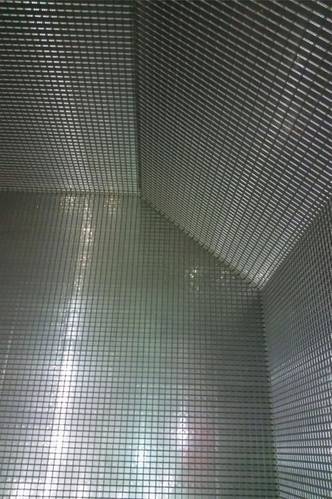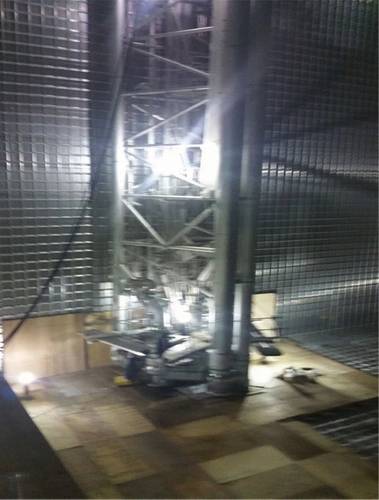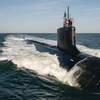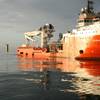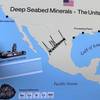Solving the LNG Propulsion Puzzle
The last piece of the LNG infrastructure puzzle, in the form of North America’s first LNG bunker barge, falls into place at Conrad’s Orange, Texas Shipyard.
With continued debate over new emissions standards and compliance dates hanging over the heads of operators in the Emission Compliance Zones like the Sword of Damocles, WesPac Midstream LLC, a provider of liquefied natural gas solutions, and its affiliate Clean Marine Energy, a facilitator of solutions for emission compliance have announced the first step in building the infrastructure needed to make LNG propulsion work along the coasts of the United States. In early March, Wespac Midstream announced a construction contract with Conrad Orange Shipyard to build the first LNG bunker barge capable of safely transporting liquid natural gas and delivering that energy source as a ship’s fuel to the marine market in North America.
Louisiana-based Conrad Industries designs, builds and overhauls tugboats, ferries, liftboats, barges, offshore supply vessels and other steel and aluminum products for both the commercial and government markets. The company provides both repair and new construction services at its five shipyards located in southern Louisiana and Texas. Johnny Conrad, Conrad’s Chairman, President and CEO declared in March, “This contract represents a first for our industry, and country. To have the opportunity to provide a Conrad barge to such innovative partners as WesPac, Clean Marine Energy, and in partnership with GTT is exciting for us, and demonstrates our organization’s ability to produce a wide variety of sophisticated vessels for our customers.”
The innovative barge design will be an important component in ongoing efforts to use natural gas as a propulsion fuel and reducing ship emissions by lowering SOx, NOx, CO2 and Particulate matter through the conversion of ships to LNG. Though many owners have considered the LNG propulsion option, few have been convinced the U.S. infrastructure would follow in a timely manner. The new construction contract, at least for some markets, should end that conversation.
According to Conrad, WesPac Midstream and Clean Marine Energy will initially deploy the barge in Tacoma, WA to service ship owner TOTE and its “Orca Class” vessels, then subsequently relocate the vessel to Jacksonville, FL to service the TOTE new build “Marlin Class” vessels as well as other LNG powered vessels slated to arrive in the Port of Jacksonville.
The project’s momentum has been building since late summer. In late August, Conrad Shipyard, L.L.C. engaged Bristol Harbor Group, Inc. (BHGI) was awarded an “Approval in Principle” (AIP) by the American Bureau of Shipping (ABS) for the design of a cubic meter Liquefied Natural Gas (LNG) Transport Barge design on behalf of Conrad. The vessel will be constructed at Conrad Orange Shipyard in Orange, TX and will be outfitted with a Gaztransport & Technigaz (GTT) designed Mark III Flex cargo containment system, which will also be built by Conrad under a license from GTT. The barge delivery is scheduled for early 2016.
Design Discussion
Many of the industry and regulatory discussions surrounding the delivery of this new fuel source have been limited to multiple Type C tanks and deck barge configurations. The Westpac Midstream LNG barge will, on the other hand, feature one single membrane tank equipped with MARK III Flex cargo containment technology provided by France-based GTT. This technology has been successful in LNG cargo ship construction in South Korea delivering tank space and capacity upwards of 180,000 cubic meters.
The GTT Mark III Flex system features a cryogenic liner supported directly by the barge’s inner hull composed of a primary and secondary barrier. The primary membrane is made of corrugated stainless steel 304 L, 1.2 mm thick. The secondary membrane is made of a composite laminate material, with a thin sheet of aluminum between two layers of glass cloth and resin, sandwiched between insulation panels. With the tank is designed for a maximum design pressure of approximately 10 PSIG, GTT’s membrane technology is Class certified by all major regulatory agencies and has been in service since 1967, encompassing over 300 LNG ships to date. The membrane technology has and continues to be proven technology for the storage and transport of LNG internationally.
On the Job
Conrad Orange Shipyard will construct the 2,200 cubic meter barge under GTT license and with GTT personnel overseeing the membrane construction. But, the project also features a host of experienced talent, designed to ensure a successful outcome. Bristol Harbor Group, Inc. of Bristol, Rhode Island will be responsible for the vessel’s design, while Alternative Marine Technologies (Amtech) of Norwalk, Connecticut will be responsible for the Owner’s design review and construction supervision. Amtech has deep experience in the LNG game, and its Korean office teams have completed GTT membrane construction at Hyundai Heavy Industries and been involved in full LNG commissioning at other Korean shipyards.
From the design side, Greg Beers, President and Principal Naval Architect of the Bristol Harbor Group, has been immersed in the many committee meetings that led to the initial barge design. He told MarineNews in March, “Bristol Harbor Group is honored to be working with Conrad Shipyard, LLC (Conrad), WesPac Midstream, Clean Marine Energy, GTT North America, Amtech and Gas Entec on this cutting edge vessel. We have been working with Conrad for years on LNG projects, and it is very satisfying to be putting all of that advance effort to work on this exciting project.”
Separately, BHGI has also been active in a number of marine related natural gas projects for a variety of clients. Recently, BHGI has been awarded a contract to perform design conversion work for the United States Army Corps of Engineers on one of their vessels from diesel to dual fuel.
The American Bureau Shipping (ABS) will act as the classification society and work closely with the United States Coast Guard for final regulatory certifications. In this case, the ABS “gas group” deserves credit for developing detailed design procedures and assisting the Coast Guard through the initial design review to accept the GTT membrane technology in this U.S. application. There have been many long hours of weekly conference calls with Captains of the Port and Coast Guard representatives of Puget Sound, MSC Washington and Port Arthur, Texas to determine the safest and most efficient way forward to complete these bunker operations. Indeed, the project depended heavily on the cooperation between all of these organizations. Stakeholders expect that the final policy letters will reflect this work when final design approvals are accepted.
This initial LNG project is part of the WesPac/CME vision to provide an integrated LNG solution for engine conversion, infrastructure, supply, and delivery of LNG to the shipping industry. As more owners and operators seek to meet stringent 0.1 percent sulfur limits within ECA’s by converting to LNG as a cleaner bunker fuel, WesPac/CME plans to exercise its options with Conrad to construct additional LNG fueling barges to serve other North American ports. Amtech has been chosen to support the Clean Marine Energy vision by supplying engineering services and labor in both during the construction phases and the ship conversions.
Locations & Logistics
The first 2,200 cubic meter barge is expected to be delivered in early 2016 and planned to initially be deployed in Tacoma, Washington, to service Totem Ocean Trailer Express’s (Totem Ocean) “Orca class” RO/RO vessels which are completing the LNG conversion process. Westpac is hopeful other owners will follow suit and produce additional LNG-powered vessels requiring the bunkering service. “A comprehensive LNG supply and distribution network for the marine market in North America is critical for the shipping industry. Today’s announcement shows that WesPac/CME is taking the necessary steps to complete the LNG supply chain so ship owners can be assured LNG will be available when and where it is needed,” added Pace Ralli, CEO and Co-Founder of CME.
The bunker barge or its sister (under contract option) will also service Jacksonville, Florida to serve TOTE’s (parent company to Totem Ocean) NASSCO built “Marlin class” container vessels, the first to be built in the world and other LNG-powered vessels in the Port of Jacksonville.
In order to bunker vessels, transport and transfer LNG to dockside storage facilities, the barge is equipped with redundant fully submerged VFD induction motor cargo pumps having a flow rate of 500 cubic meters (m3) per hour. The fully submerged pumps allow the barge’s membrane tank, at atmospheric pressure, to conduct transfer operations to pressurized IMO Type C tanks or to other membrane atmospheric type tanks aboard ship.
The barge will be equipped to receive vapor displaced from the receiving Type C or membrane tank during cargo transfer, if the receiving vessel is unable to handle the displaced vapor. The barge will be able to engage in single loading/offloading of the entire cargo and in multiple parcels offloading in vessel-to-vessel transfers or transfers to/from dock side storage facilities.
The cargo system will be able to perform cooling down operations with the stripping/spray pump and maintain membrane temperatures. In addition, the stripping pump will be able to unload cargo and serve as an emergency cargo pump when needed, as well as occasionally to supply liquid to the vaporizer for vapor-pressure management in the tank during offloading operations.
The barge will feature a double hull, double chine rake bow, raked stern with skegs and zero sheer in way of the cargo tank structure. To begin with, Foss Maritime will handle the tow in Tacoma and Puget Sound. Pacific Northwest-based Foss is arguably the ideal partner to safely handle the new age fuel being introduced into the maritime arena and of course, this supports their sister companies as they worked towards solving the emissions puzzle required in the Emission Control Areas in the near future.
(As published in the April 2015 edition of Marine News - http://magazines.marinelink.com/Magazines/MaritimeNews)







